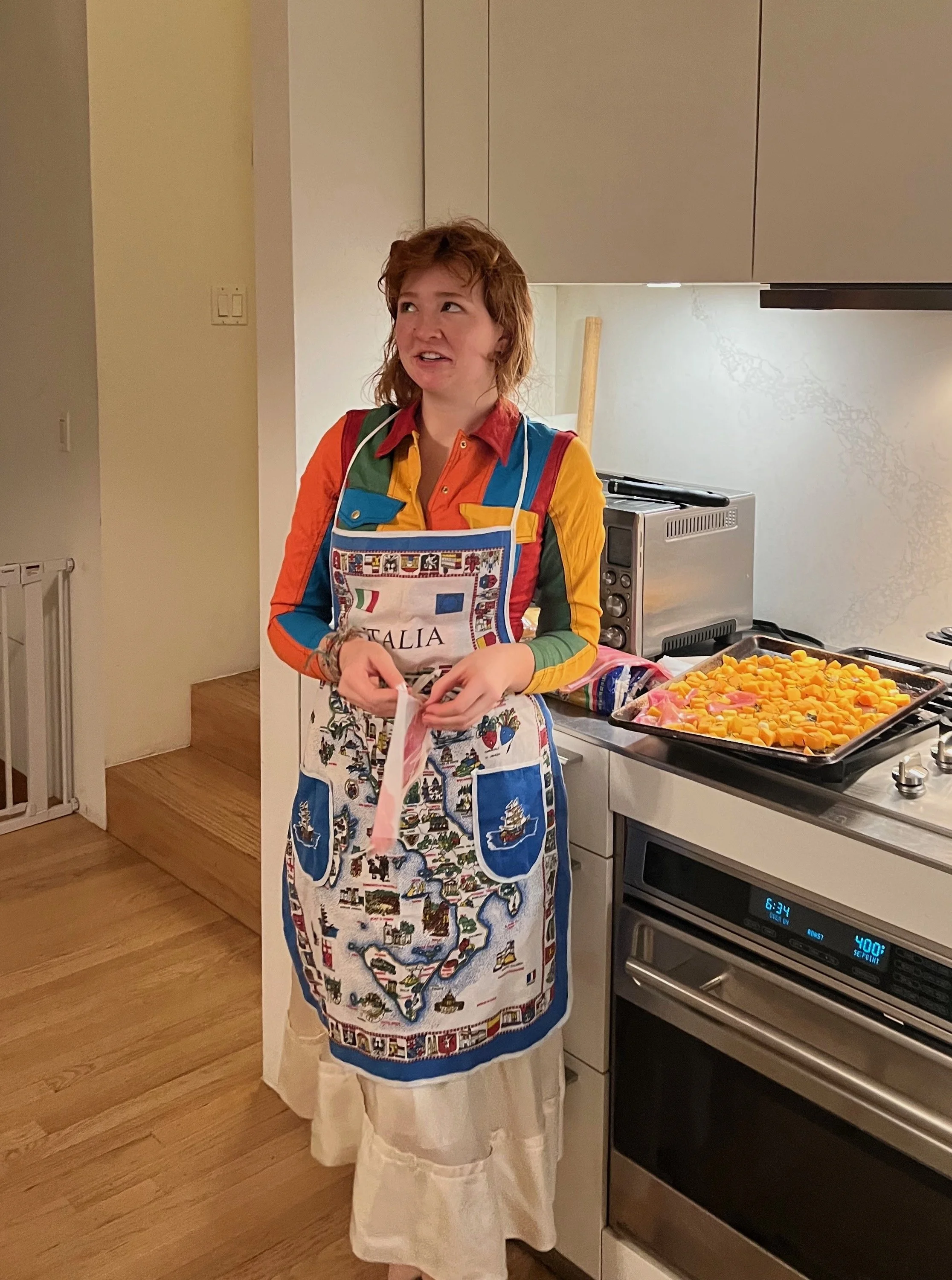Tess Oreck - Creator, I hope
As a child, I frequented the California Science Center to see my namesake – Tess, the 50-foot-long human body simulator. Her light-up organs pulsed as her cartoon sidekick explained homeostasis, sparking my fascination with the body’s interplay of form and function. Tess was an impactful reimagination of science, function, and style – which I hope to further explore in university
Anatomy inspires visually striking and functional design. Apparel work from Maison Schiaparelli’s skeletal dresses to Jean-Paul Gaultier’s muscular bodysuits and Iris Van Herpen’s kinetic “biomimicry” have inspired my self-taught apparel journey, focused on biological forms, this year. Conversely, projects like YVMIN’s functional artistic prosthetics, reusable face-masks in developing countries, and Care + Wear’s reimagined hospital gown, address healthcare disparities through innovative design. Many iconic furniture designs focus on interaction with human form, such as the Panton Chair, Friedeberg’s Hand-Chair, Pesce’s Up 50 armchair, Studio 65’s Bocca sofa, or Saarinen’s Womb Chair. Bio-inspiration produces incredible architecture from the Salk Institute for Biological Studies here in Southern California to contemporary Dutch hospitals.
Though biomedical design is my current focus, it’s the result of my long creative journey. I’ve played violin in orchestra, jazz band, chamber group, and solo for 13 years. Approaching the expressive musical medium in a methodical way, the balance of artistic and technical develops my design-thinking process. In film classes, analyzing and trying my hand at diverse eras and genres expanded my conception of visual storytelling, envisioning images from colors, subjects and movement around me and incorporating other artistic practices. My filmmaking journey has allowed me to develop my creative process, skills, and style. I merged design and film working in Graphic Design at Narrator, Inc, making promotional material for studio films, and continued graphic design independently (e.g. making a pitch deck and visuals for a potential animated TV program).
I apprenticed ceramicist Betsey Carter in collaboration with outdoor access non-profit TM23, learning about object design and production, and relating creative projects to social causes. At school, I spearheaded creative projects in Feminist Education Club and Jewish Student Union leadership. In student government, I’ve managed social media accounts and made comedic informational videos, designed student merch, set up Halloween haunted houses, and more, using creative problem-solving to communicate and serve my school community.
I’ve approached other visual arts unconventionally. Stickers and doodles litter notebooks that line my bedroom beside movie posters, political history graphics, painted skateboards, and books from Fruits to What Great Paintings Say, incorporating aesthetics and personality into my space. This is especially important to me after my exchange year in Italy through the American Field Service (AFS). Immersion in a new culture’s architecture, city structure, fashion, education, and more encouraged reflection on design and function in my everyday life. As I grew fluent in Italian, I explored this in my Technical Design class, sketching geometry and architecture.
I continue channeling creative principles into academic subjects from the elective Post-1945 History Through Literature and Art, to Biological Research, where I’ve learned about the complex design of biological systems, channeled complex information into diagrams and animations, and approached research with a creative lens.
As quantum theorist Max Planck said, “The pioneer in science [...] must have a vivid intuitive imagination, for new ideas are not generated by deduction, but by an artistically creative imagination.” Indeed, I hope to further study the intersection of technical function and creativity through a design education for innovative potential in a number of fields.
